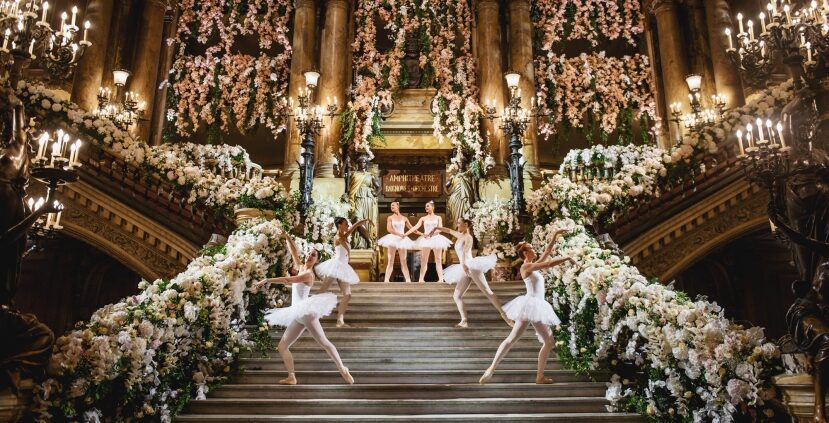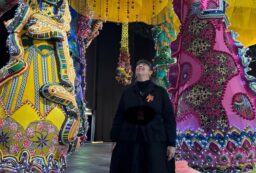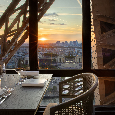
By India Gustin
There could be a ghost. Or it could just be one of the dancers. The creaking noises could be sign of paranormal activity. Or it could just be the janitor. The theatre has such an extensive past, filled with joy, applause and excitement. However, cataclysm and misfortune also scatter its history. Yet in the midst of it all, ballet performances have outshone its turbulent past, from 1875 until now. From the intricate architecture to the allure of its tale, visitors have been touring Palais Garnier since it opened over a century ago. In any case, there is only one way to delve into this historical territory and that is through a VIP tour of the Palais Garnier.

The 9th arrondissements in Paris houses one of the county’s most historical yet exclusive theatre. Palais Garnier, also known as Opéra Garnier, can seat just over 1,900 guests. Since it hosted its first performance in 1875, the theatre has housed several masterpieces, including Phantom of the Opera. Architecturally, it has inspired several establishments such as the Massimo Bellini theatre and the Hanoi Opera House (all comparatively less opulent in style). Whilst it is now reserved mainly for ballet performances, guests have the opportunity to delve into the deeper, more secretive areas of this infamous opera house. In this VIP tour of Palais Garnier, visitors get to step out of the jewelry-box designed auditorium and into the most exclusive spaces, like the sewing workshops and cabestans room.

The story behind how the theatre came to be is a historic one. On a night in 1858, Empress and Emperor Napoleon III were on their way to the then-opera house. An Italian anarchist by the name of Felice Orsini tried to bomb their carriage. The explosion left three craters in the street and blew the glass out of nearby buildings. Whilst the power couple remained unharmed, Napoleon called for a new opera house to be built for safety reasons. To decide on who would get to design such an honor, a competition was held. One man’s composition blended several historical influences, opting an eclectic and stately creation: Charles Garnier. The opera was completed in 1874 and is a longstanding representation of Neo-Baroque architecture. In cruel irony, the Emperor died in 1873 and never got to attend a performance in one his most famous commissions.
"Whilst it is now reserved mainly for ballet performances, guests have the opportunity to delve into the deeper, more secretive areas of this infamous opera house"
A walk-through of the public areas of the theatre is enough to reel visitors into its grand and dignified history, its secrets and unknown spaces. Arop, together with Opéra National de Paris, offers a private tour of Palais Garnier with the purpose of allowing guests to not only uncover truths, but to enrich what they already know about Paris’ tumultuous art and culture scene. The auditorium and backstage areas are reserved for this exceptional visit.

At the heart of this private tour are the sewing workshops. Costumes are tailor-made to ensure that the performers strictly mirror their routines during rehearsal. From the length of the tutu to the fitting of the bust, everything is decided in these behind-the-scene ateliers. Hours are pored into each garment. Whilst the smallest details may not be seen from the stage, the quality of the creations must be visible to all the spectators. The tour allows guests to explore the 19th century ‘central costumes’ room, which stores the latest of these intricate creations. The workshop manager and guide may also disclose some of the company’s costume-making secrets.
This tour will take the guests from the utmost left of Palais Garnier all the way to the right, covering ground which only performers and directors have the privilege of traversing. However, the majority of the theatre’s legends are located somewhere else. Fifteen meters below the main stage, visitors can access the cabestans room. This is where all the machinery of the historical theatre is located. Here, the guests can discover the mechanisms that were used to make performers and sets appear on and off stage.

The Grand Escalier is one of the focal points of Palais Garnier. It is entirely made from marble and divides into a double staircase towards the top. This is where guests and spectators get led into the infamous foyer as well as various other rooms and floors of the theatre. Chandeliers, gold and allegories holding torches are a recurring theme not only at the base of the staircase, but in the foyer and salon as well. The result is similar to the atmospheric grandeur of the first-class ball in the classic film, Titanic.

Evoking the Belle Époque, the Grand Foyer was designed to welcome audience members during intermissions. Its design and interior facades were inspired by castles and galleries from the classical era. The auditorium is enclosed in red velvet and gold. The ceiling boasts a 220-meter-long painting by Marc Chagall which gives the concert hall a warm tone, resulting in a more cosy rather than intimidating ambience.
During the VIP tour, guests can explore the areas unknown to the public in more detail. In particular, the Foyer de la Danse, also known as the ‘antechamber’. It was once the setting for privileged members of society to be introduced to artists and performers. Nowadays, it acts as a rehearsal room for ballet dancers to warm up before entering the stage. Visitors can explore this backstage area as the guides — who know various different languages, including Portuguese and Japanese — transport them back to the 19th century.
"This tour will take the guests from the utmost left of Palais Garnier all the way to the right, covering ground which only performers and directors have the privilege of traversing"
 Palais Garnier has many interesting facts surrounding its history. It was the first opera house in the world to have electricity. It has the largest stage in Europe. It was the most expensive build of its time. Yet it is also known to have secrets, even myths, that engulf its past. Although many speculate there being paranormal entities within the theatre, Palais Garnier is not haunted by a ghost. However, one event that happened there did inspire one of the most infamous novel-turned-performance of all time.
Palais Garnier has many interesting facts surrounding its history. It was the first opera house in the world to have electricity. It has the largest stage in Europe. It was the most expensive build of its time. Yet it is also known to have secrets, even myths, that engulf its past. Although many speculate there being paranormal entities within the theatre, Palais Garnier is not haunted by a ghost. However, one event that happened there did inspire one of the most infamous novel-turned-performance of all time.
The Phantom of the Opera portrayed a real-life tragedy that occurred at the theatre. The ceilings of the various floors inside Palais Garnier are, to this day, lit by numerous heavy chandeliers. In May 1896, one of Garnier’s 7-ton bronze chandeliers tore away from the counterweights, crashing down on the audience below. One concierge was killed. This accident inspired one of the more famous scenes in Gaston Leroux’s novel.

Guests who want to experience the VIP tour of Palais Garnier can confront these mysteries first-hand. Included in the tour is also a look into the underground water tank, located below the stage. Whilst the belief that the theatre houses an underground lake is an exaggeration, the reality is not far off. It does sit a large artificial reservoir, but not as a result of a dark and haunted past. This was Garnier’s solution to finding an unexpected large amount of groundwater during the build. In this way, the main structure is protected by the moisture. Therefore, while there may be an explanation for just about everything, the tour does allow for the guests’ minds to run free. For the cherry on top, a white catfish resides there — a detail also mentioned in Leroux’s masterpiece. Guests may catch a glimpse of it during the tour.

Attending any type of performance at Palais Garnier is on the bucket list of not just tourists, but Parisian socialites as well. From the well known classics to the more modern renditions, the performances all capture the historical and cultural significance of the architecture. While attending a show may be enough for some visitors, a private tour of the building ensures a more in-depth and rounded experience of the French opera.
















